Contents
Far Eastern Caesar mushroom (Amanita caesareoides)
- Division: Basidiomycota (Basidiomycetes)
- Subdivision: Agaricomycotina (Agaricomycetes)
- Class: Agaricomycetes (Agaricomycetes)
- Subclass: Agaricomycetidae (Agaricomycetes)
- Order: Agaricales (Agaric or Lamellar)
- Family: Amanitaceae (Amanitaceae)
- Genus: Amanita (Amanita)
- Type: Amanita caesareoides (Far Eastern Caesar mushroom)
:
- Caesarean Far East
- Amanita caesarea var. caesareoides
- Amanita caesarea var. caesaroids
- Asian Vermilion Slender Caesar
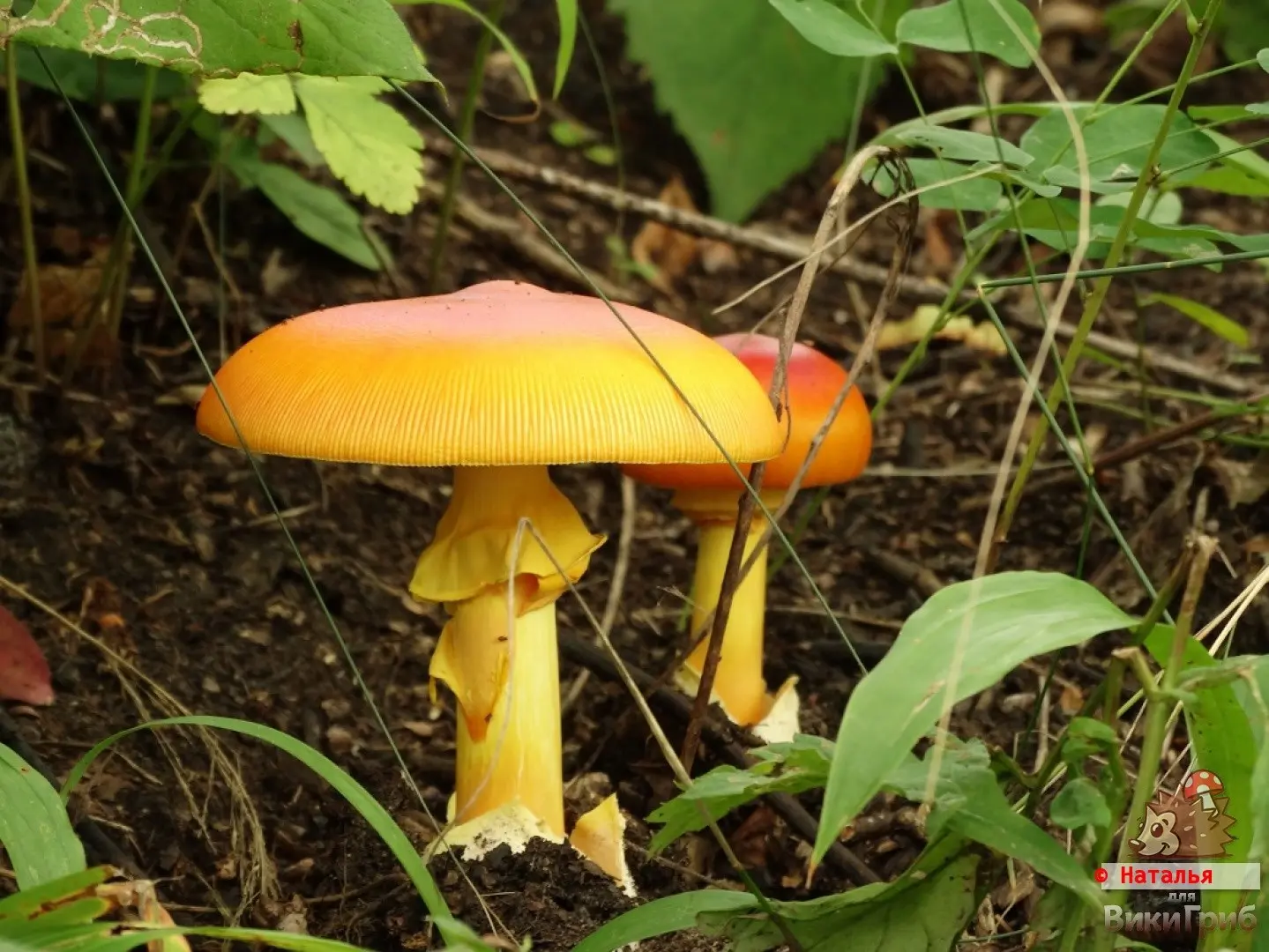
The species was first described by L. N. Vasilyeva (1950).
Amanita caesar is outwardly very similar to Amanita caesar, the obvious differences are in the region of habitat and in the shape / size of the spores. Of the distinguishing macrofeatures, one should name the “legged Volvo”, which is almost always present in the Caesarian Far East, in the American counterpart of the Caesarian Amanita jacksonii, but is extremely rarely seen in the Mediterranean Caesar.
As befits the Amanites, the Far Eastern Caesarian begins its life journey in an “egg”: the body of the mushroom is covered with a common veil. The fungus hatches from the egg by breaking this shell.
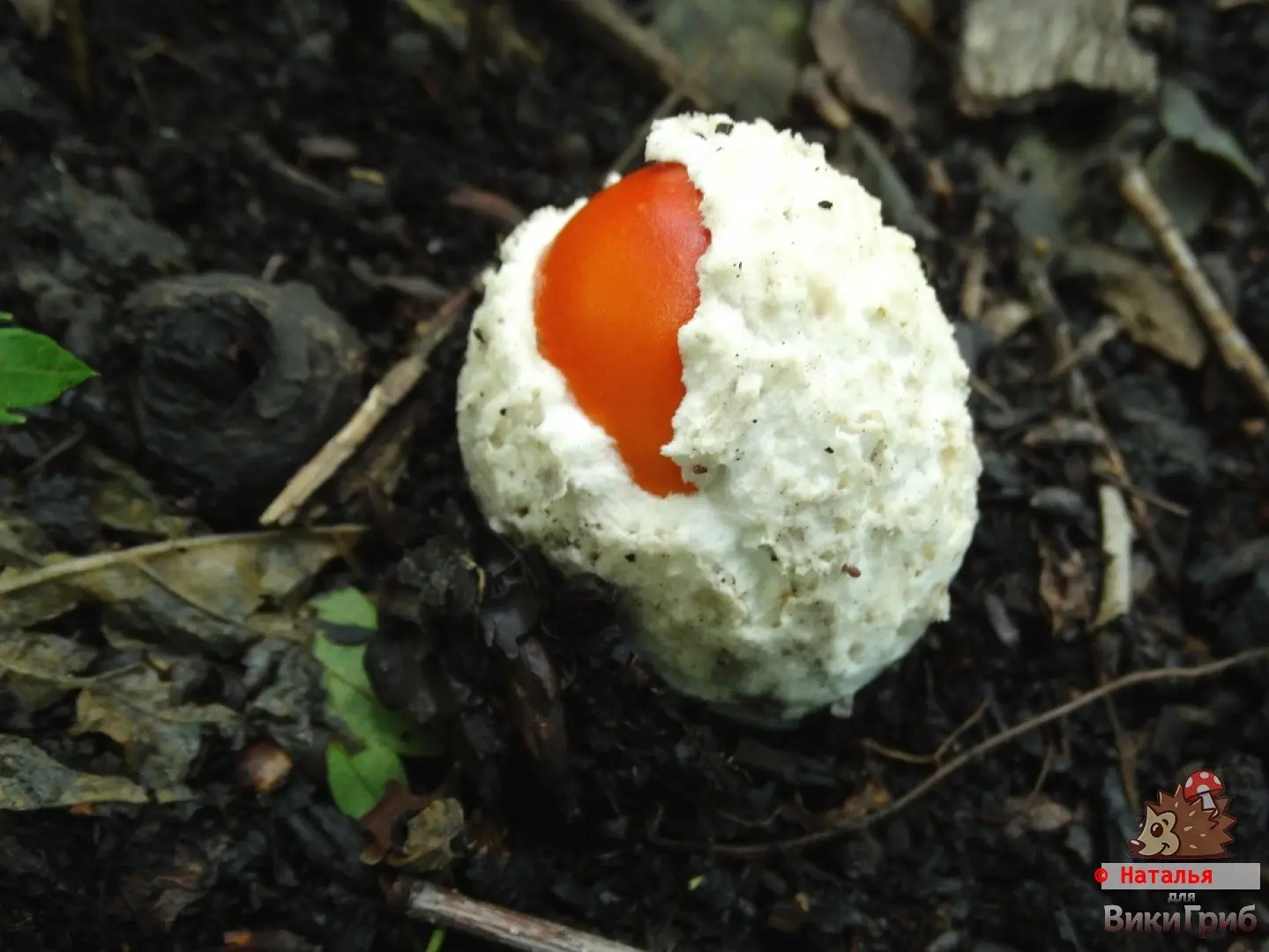
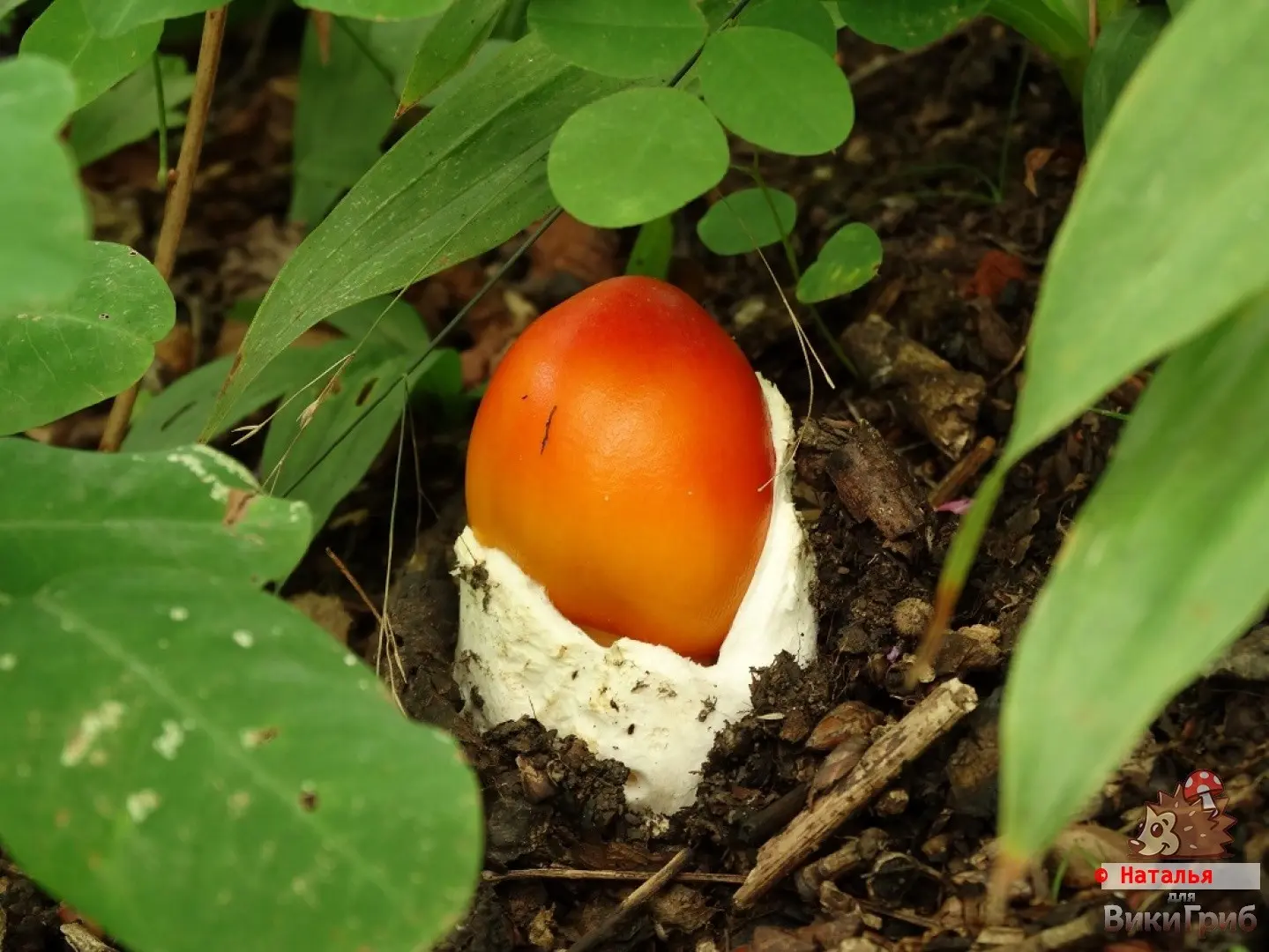
The characteristic signs of Amanita caesareoides appear with growth, it is extremely difficult to distinguish fly agarics at the “egg” stage, therefore it is recommended to collect only already grown specimens in which the color of the stem, ring and the inside of the Volvo is already clearly visible.
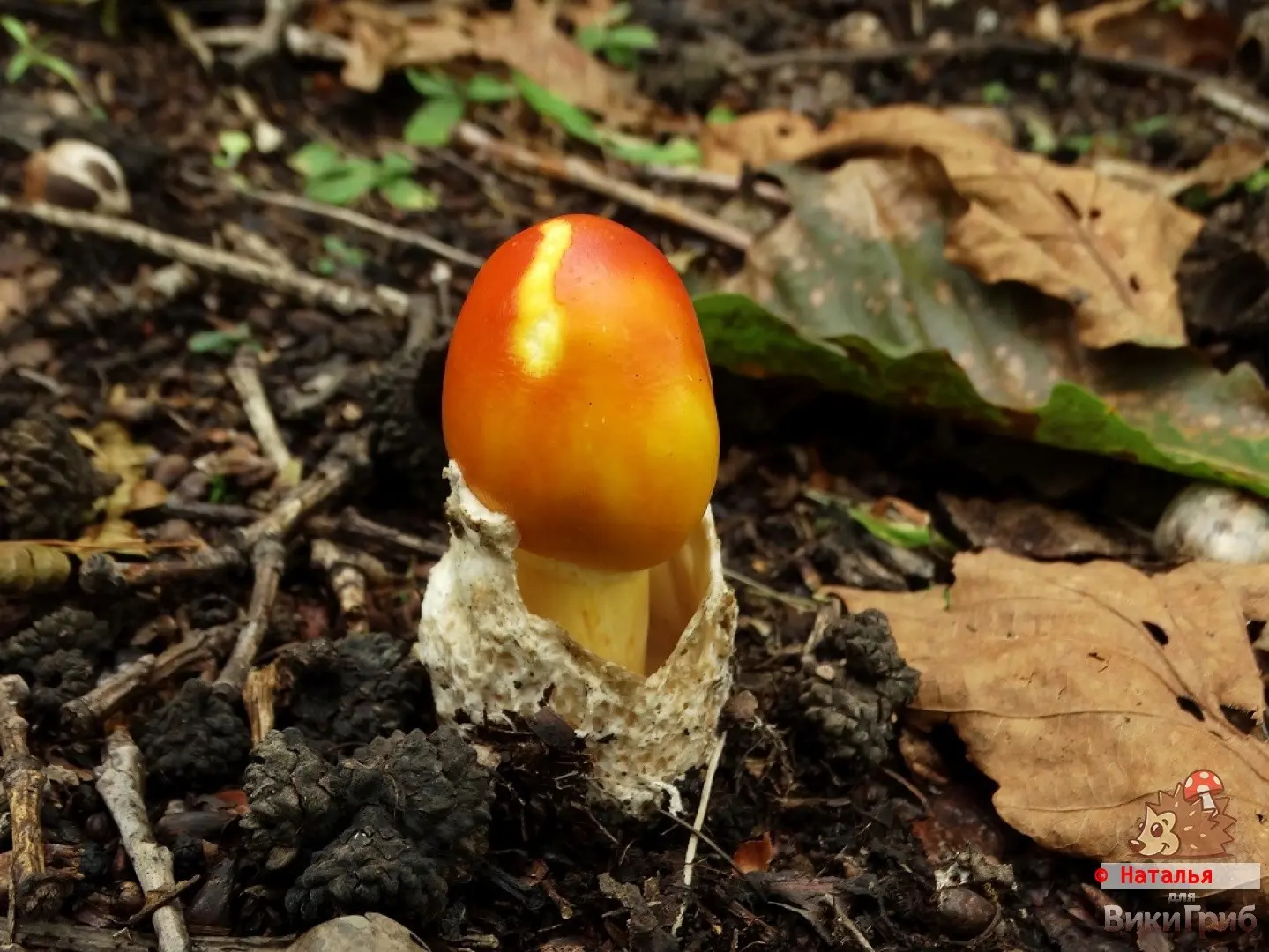
head: an average diameter of 100 – 140 mm, there are specimens with hats up to 280 mm in diameter. In youth – ovoid, then becomes flat, with a pronounced wide low tubercle in the center. Red-orange, fiery red, orange-cinnabar, in young specimens brighter, more saturated. The edge of the cap is ribbed by about a third of the radius or more, up to half, especially in adult mushrooms. The skin of the cap is smooth, bare, with a silky sheen. Sometimes, rarely, pieces of a common veil remain on the hat.
The flesh in the cap is white to yellowish white, thin, about 3 mm thick above the stalk and vanishingly thin towards the edges of the cap. Does not change color when damaged.
plates: loose, frequent, wide, about 10 mm wide, pale ocher yellow to yellow or yellowish orange, darker towards the edges. There are plates of different lengths, the plates are unevenly distributed. The edge of the plates can be either smooth or slightly jagged.
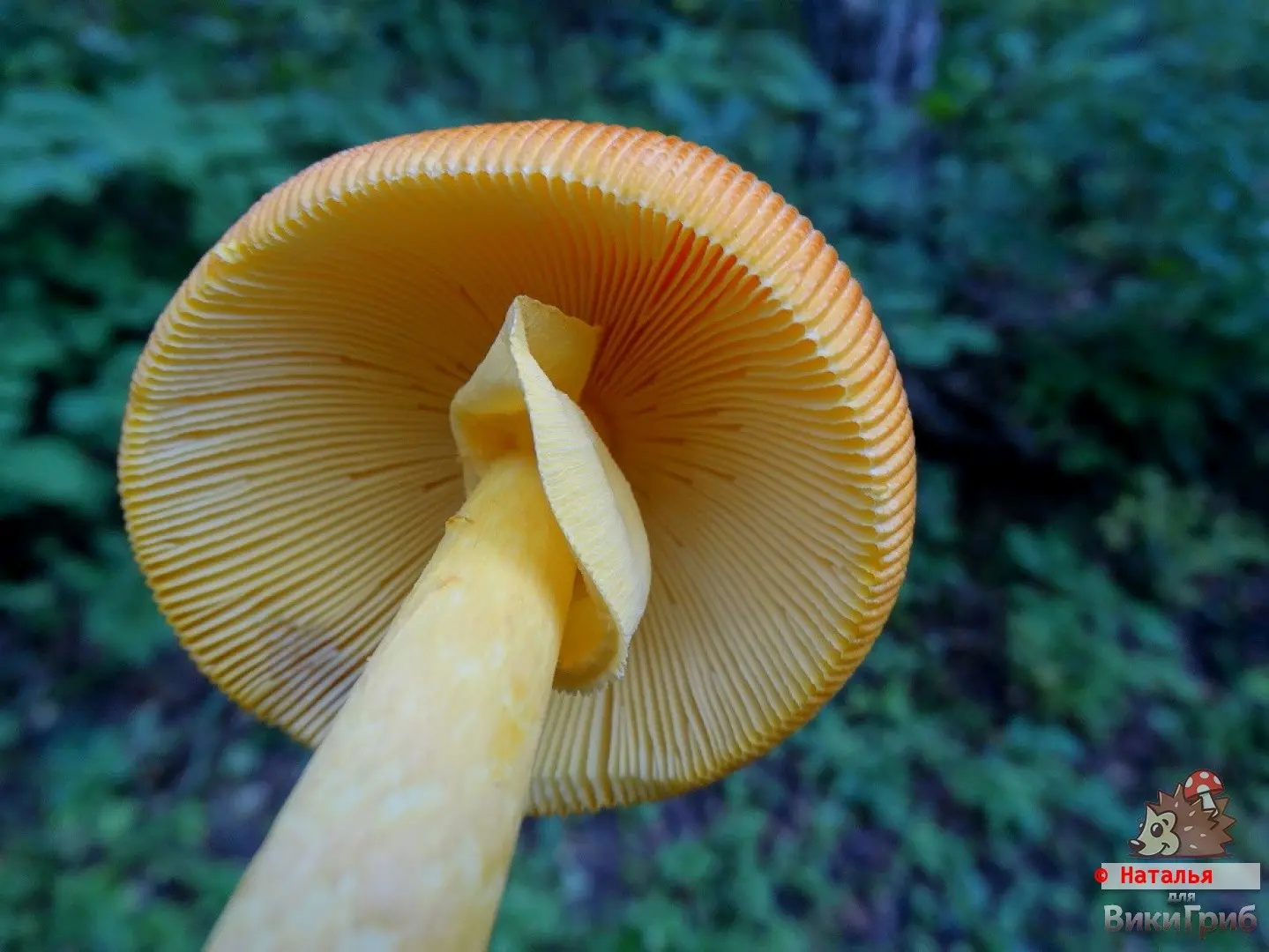
Leg: on average 100 – 190 mm high (sometimes up to 260 mm) and 15 – 40 mm thick. Color from yellow, yellowish-orange to ocher-yellow. Tapers a little at the top. The surface of the stem is glabrous to finely pubescent or decorated with ragged orange-yellow spots. These spots are the remains of the inner shell that covers the leg in the embryonic stage. With the growth of the fruiting body, it breaks, remaining in the form of a ring under the cap, a small “leg volva” at the very base of the leg, and such spots on the leg.
The flesh in the stalk is white to yellowish-white, does not change when cut and broken. In youth, the core of the leg is wadded, with growth the leg becomes hollow.
Ring: there is. Large, rather dense, thin, with a noticeably ribbed edge. The color of the ring matches the color of the stem: it is yellow, yellow-orange, intense yellow, and may look dirty with age.
Volvo: there is. Free, saccular, lobed, usually with three large lobes. Attached only to the base of the leg. Fleshy, thick, sometimes leathery. The outer side is white, the inner side is yellowish, yellow. Volvo sizes up to 80 x 60 mm. The internal volva (limbus internus) or “leg” volva, present as a small area at the very base of the stem, may go unnoticed.
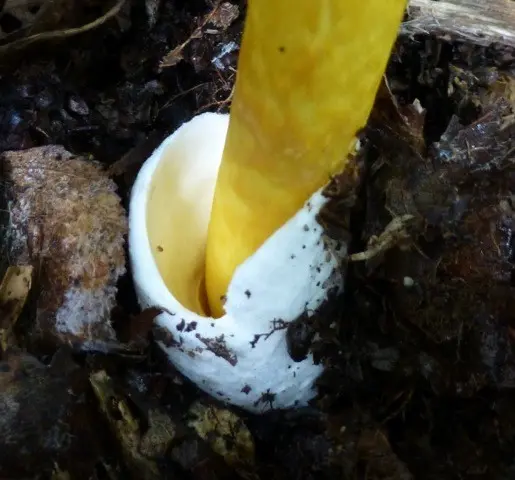
(photo: mushroomobserver)
spore powder: white
Споры: 8-10 x 7 µm, almost round to ellipsoid, colorless, non-amyloid.
Chemical reactions: KOH is yellow on the flesh.
The mushroom is edible and very tasty.
It grows singly and in large groups, in the summer-autumn period.
Forms mycorrhiza with deciduous trees, prefers oak, grows under hazel and Sakhalin birch. It occurs in the oak forests of Kamchatka, is typical for the entire Primorsky Territory. Seen in the Amur Region, Khabarovsk Territory and Sakhalin, in Japan, Korea, China.
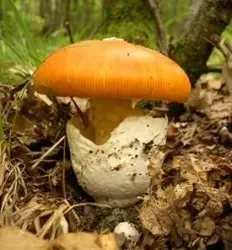
Caesar mushroom (Amanita caesarea)
It grows in the Mediterranean and adjacent regions, according to macro characteristics (size of fruiting bodies, color, ecology and fruiting time) it almost does not differ from Amanita caesarean.
Amanita jacksonii is an American species, also very similar to the Caesar Amanita and the Caesar Amanita, it has on average fruiting bodies somewhat smaller, red, red-crimson rather than orange colors predominate, spores 8-11 x 5-6.5 microns, ellipsoid.

Amanita muscaria
Distinguished by white stem and white ring
Other types of fly agaric.
Photo: Natalia.









